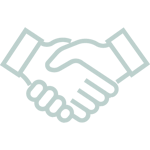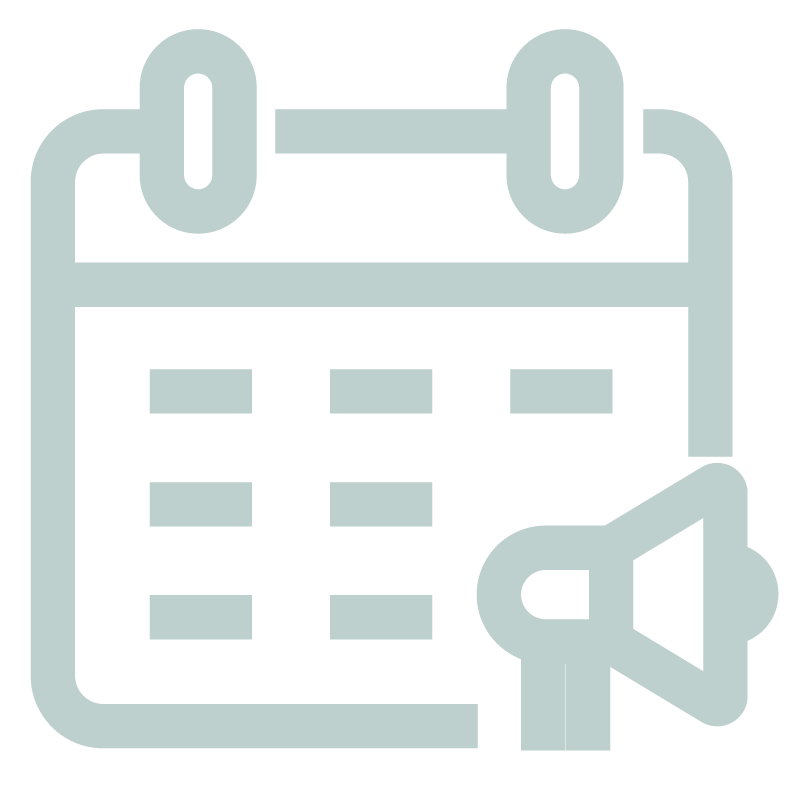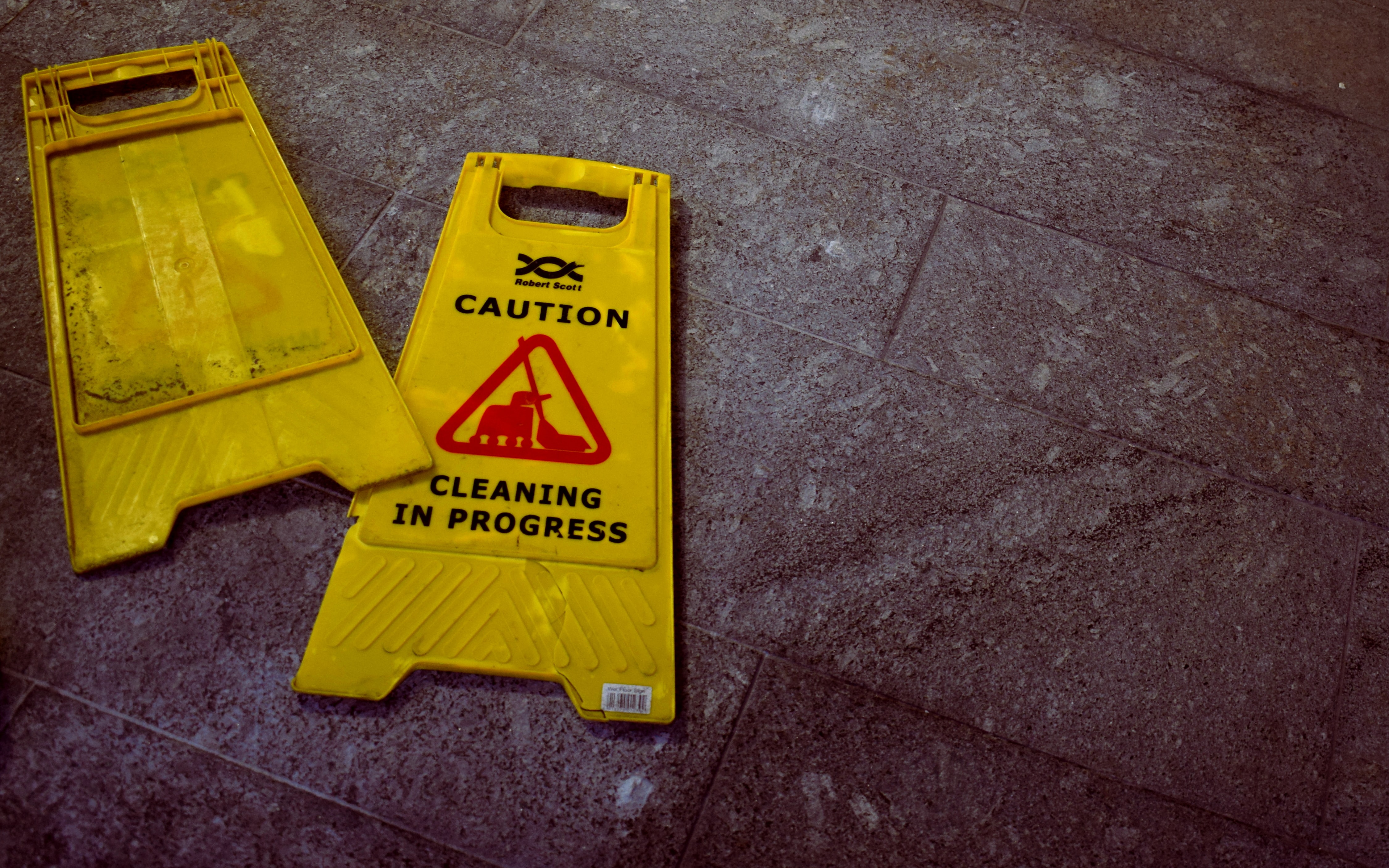Cleaning can take a toll on a body, but it doesn’t have to be bad for your staff’s health. Following the cleaning industry best practices for health and safety has never been more critical than now, as occupants of all buildings carry higher expectations for cleanliness. Fortunately, there are also more solutions available to help mitigate some of the most common health and safety risks for cleaners.
Taking steps to improve health and safety for cleaners is well worth the investment as it reduces absenteeism, productivity, and improves retention among cleaning staff.
By rethinking how cleaners handle some of the most physically demanding tasks, taking a fresh look at your policy for cleaning chemical management, and addressing slips, trips, and falls, employers can reduce risks to their cleaners. By prioritizing training, encouraging feedback on potential risks, and offering flexible sick leave, you can create a culture that nurtures workers and builds employee loyalty.
1. Rethink the most physically demanding tasks
OSHA reports that janitors and cleaners fall into the high-risk category for musculoskeletal disorders. Lifting or pulling heavy items, working in uncomfortable body postures, and performing repetitive tasks all impact cleaners' health and safety. These are the types of jobs you want to reimagine to lessen the strain on your workers.
Cleaning industry best practices for reimagining these tasks can be as simple as moving from traditional string mops to a lightweight microfiber mop. However, another increasingly preferred solution is to replace monotonous tasks, such as sweeping, mopping, and vacuuming, with automated tools. By investing in an automated cleaning solution such as Whiz, the commercial robot vacuum, developed in partnership with Brain OS and ICE Robotics, cleaners can not only limit some of the leading strain-inducing tasks but are also able to complete more work in the same amount of time. This is particularly critical in the new cleaning culture, which has led to an increased expectation for a spaces’ cleanliness.
2. Try new chemicals with caution
Cleaners may work with a wide range of chemicals to clean and disinfect various surface types, but in some cases these chemicals can present problems of their own. These irritants may not always be evident at low instances of exposure or under certain conditions. For example, some chemicals may only lead to breathing problems if the space is not adequately ventilated while others may only release irritants if released in high concentrations. The surfactants active in many cleaning agents cause a range of skin problems, including hand dermatitis.
Appropriate personal protective equipment (PPE) is an essential first step for ensuring health and safety for cleaners. Limiting the number of chemicals used is another cleaning industry best practice. By selecting cleaning solutions that can tackle a wide range of surfaces, there’s less risk of a combination of chemicals spurring health problems. Products certified as “green” focus on natural solutions that can provide safer options as well.
When introducing new chemicals, the material safety data sheet provides information on the active ingredients and symptoms of potential health problems for which cleaners should be on alert. Always, always read the instructions on the label before using a new cleaning chemical and follow EPA’s six steps for safe and effective disinfectant use.
3. Address slips, trips, and falls
Slips, trips, and falls are some of the most pervasive workplace hazards. The National Safety Council notes that slips, trips, and falls is the second most common work-related injury, impacting about 24 of every 10,000 full-time workers and leading to an average of 13 days lost on the job. These types of injuries are particularly prevalent in the cleaning industry. Risks arise from walking on dirty or wet floors, using poorly maintained stairways, or having a worn grip on their footwear.
The act of cleaning itself can lead to a risk of falls. Wet, soapy floors present a significant threat. One solution is to move from wet mopping to vacuuming hard floor surfaces. There’s growing evidence that vacuuming is more effective than sweeping or mopping. Brooms and mops can leave fine dust behind, can’t always get into the floor edges, and may glide over the surface of tiles and leave dirt within the grout lines. Vacuuming is more effective in each of these cases. Many cleaners also find that vacuuming more effectively lifts dried snow and salt that might liquify and film up beneath a mop.
4. Prioritize training
On the job training should never be one-and-done. Regular training gives workers confidence, boosts productivity, and improves health and safety for cleaners. Consistent training also provides clarity around expectations and can encourage autonomy on the job. One study of cleaning company employees found that the combination of a high workload with a lot of autonomy over how the work is completed can lead to less stress than increased workload and low control over work.
Cal OSHA suggests that effective training provides direction on proper handling of chemicals and equipment and PPE. It presents information in a range of formats—think classroom setting, on-the-job discussions, and visual aids—to account for various learning styles.
Pairing newer staff members with more experienced partners familiar with the cleaning industry best practices can build mentorships. It also provides those more experienced cleaners a level of responsibility and trust that can boost engagement. Researchers have found that people who serve as mentors experience lower anxiety levels and describe their job as more meaningful than those who do not mentor.
5. Ask for feedback on job site risks
Asking staff for their ideas on reducing or eliminating health and safety risks for cleaners doesn’t just help you develop a more thorough safety plan—although it does that too. After all, who knows the job site better than the cleaners working within it each day? Encouraging feedback on risks also opens your team’s eyes to potential hazards and prepares them to be more alert for these risks.
Getting this feedback can sometimes be tricky. In a survey of 1,500 workers across 22 organizations, the authors of Crucial Conversations found that 93% of employees said their workgroup was currently at risk from a safety issue that was not being discussed. It’s important to listen actively and then demonstrate that you will act upon employee feedback. It’s also essential to create a clear message that speaking up about potential hazards or painful tasks won’t cause any retribution, and that your company culture supports speaking up.
Provide flexible sick leave
Having a sick leave policy that allows workers to care for themselves when they are ill or injured is critical, even if it is not the norm in the cleaning industry. Making it difficult for sick workers to stay home elevates your risk of illness spreading to the rest of your staff or other building occupants. And, policies that encourage injured workers to stay on the job can exacerbate potentially minor injuries until you lose team members.
Yes, paid sick leave can be costly. But keep in mind, the cost of turnover is far more detrimental to your bottom line. Conservative estimates put the cost of replacing a single employee between one-half to two times the employee's annual salary. A flexible sick leave policy is a competitive benefit that can help attract and retain top talent.
Invest in health and safety for cleaners
Your people are your most significant investment and your most valuable asset. Reducing risks to health and safety for cleaners can pay off in greater employee loyalty and reduced turnover. This, in turn, can encourage better performance and the greater consistency that your clients prize.
The right investments can make a big difference in your team’s health and safety. Whiz is one clear example of how you can improve working conditions for your staff. To learn more about how Whiz can support your team, contact us today.








